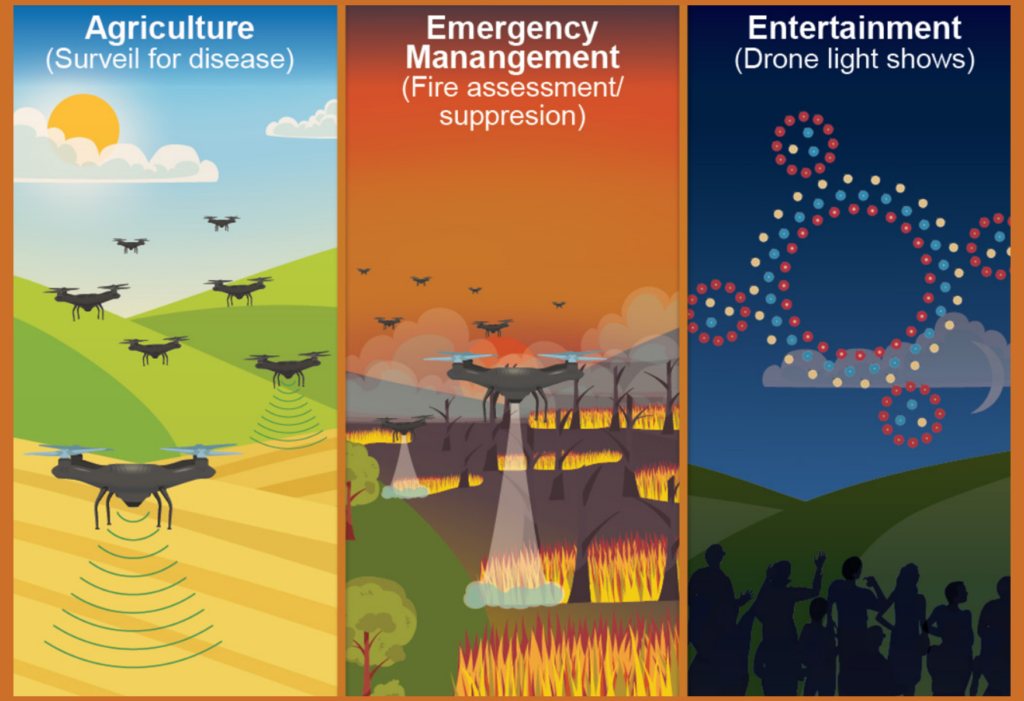Drone Tech: Pushing Boundaries
Explore the forefront of drone technology, where innovation knows no limits. From advanced flight features to state-of-the-art cameras, witness how drones are redefining what’s possible in the skies…
Artificial Intelligence (AI)
Artificial Intelligence (AI)
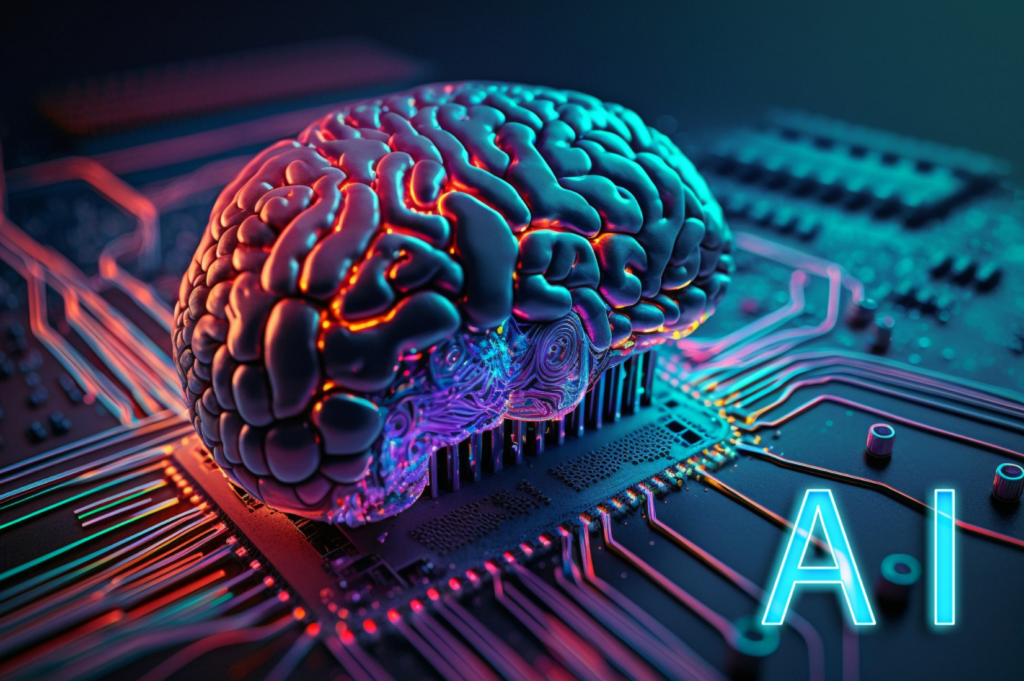
Refers to the capability of a system to interpret external data accurately, learn from this data, and apply these learnings to achieve specific goals and tasks through flexible adaptation. An intelligent system must exhibit the ability to interpret, learn, and adapt effectively to be considered truly intelligent.
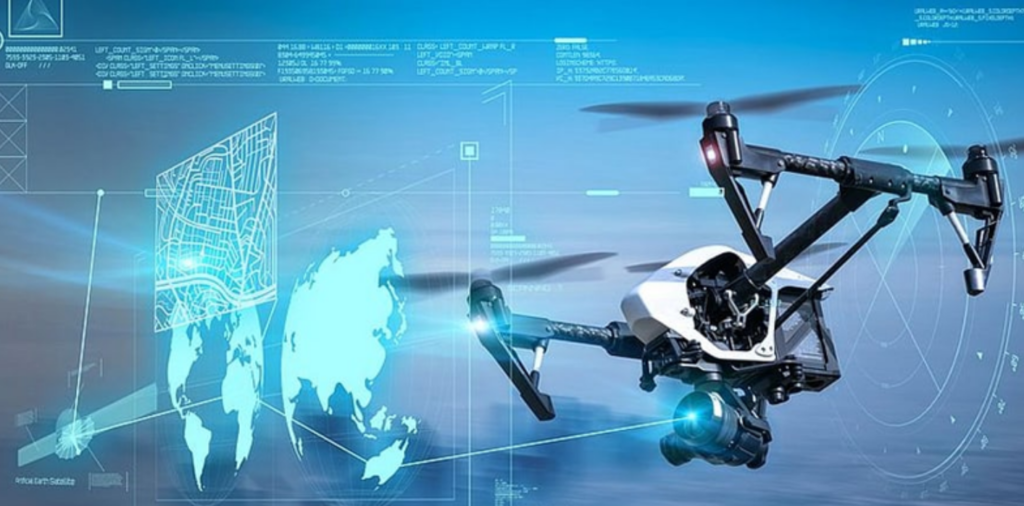
Drones + AI = _____?
THE NEW RELM
Drones, the unmanned aerial vehicles of the future, are revolutionizing various industries with their versatility and capabilities. The integration of Artificial Intelligence (AI) technology into drones is taking their functionality to new heights.
1. Autonomous Flight: With AI onboard, drones can navigate autonomously, freeing them from the need for constant human control. This not only enhances operational efficiency but also enables drones to cover larger areas and fly for extended periods.
2. Enhanced Decision-Making: AI-equipped drones have the intelligence to make critical decisions on their own. They can analyze data in real-time, identify obstacles, and adapt their flight paths accordingly. This capability is invaluable for tasks like search and rescue operations and surveillance.
3. Expanded Applications: The integration of AI expands the range of applications for drones. From search and rescue missions to agricultural monitoring and package delivery, AI-powered drones can perform a wide array of tasks with precision and efficiency.
4. Automation Revolution: AI-driven automation is reshaping the future of drone technology. Drones can now be programmed to execute complex tasks autonomously, such as delivering packages or patrolling areas for security purposes. This not only saves time and resources but also opens up new possibilities for innovation.
5. Reinforcement Learning: Cutting-edge techniques like reinforcement learning are empowering drones to learn and adapt in real-time. This enables them to navigate dynamic environments, avoid obstacles, and optimize their behavior for maximum efficiency.
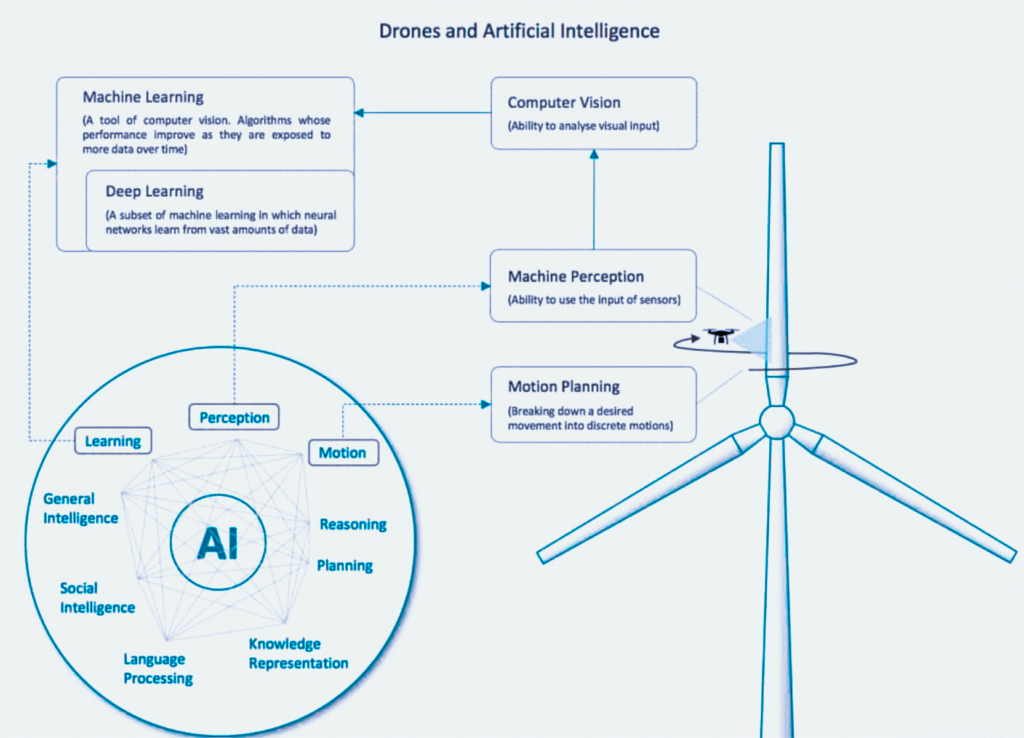
How it Works ?
AI-based drones utilize computer vision technology powered by neural networks to detect objects while flying and analyze ground information in real-time. By processing high-performance onboard image data, these drones can perform tasks like object detection, classification, and tracking, allowing them to avoid collisions and locate targets autonomously. Neural networks are trained with specially marked images to recognize and classify objects, continuously improving their performance over time. Additionally, sensors collect visual, positioning, and environmental data to inform machine learning models about environmental conditions and optimize drone navigation. Integrating AI into drone systems enables real-time data processing during flight, providing continuous feedback to operators and facilitating automatic corrections or full automation of flight operations. Furthermore, AI enhances human operation by measuring efficiency, identifying skillful traits, and developing training programs to enhance safety and efficiency. Overall, AI enhances the capabilities of drones, enabling them to operate effectively and safely in various applications.
Efficient AI Drone Delivery Services
AI drones in delivery services utilize advanced algorithms for autonomous navigation,
Agriculture
In agriculture utilize advanced sensors and algorithms to monitor crops, assess soil health, and optimize farming practices. By providing real-time data insights, they enhance efficiency and productivity while minimizing resource usage and environmental impact.
Improve Search and Rescue
Enhance search and rescue operations by efficiently scanning terrain, detecting heat signatures, and identifying hazards. Their real-time data capabilities aid rescue teams, reducing response times and saving lives.
Construction Industry
In construction provide precise monitoring and inspection, optimizing workflows and enhancing safety. With real-time data analysis, they streamline operations, reduce delays, and cut costs.


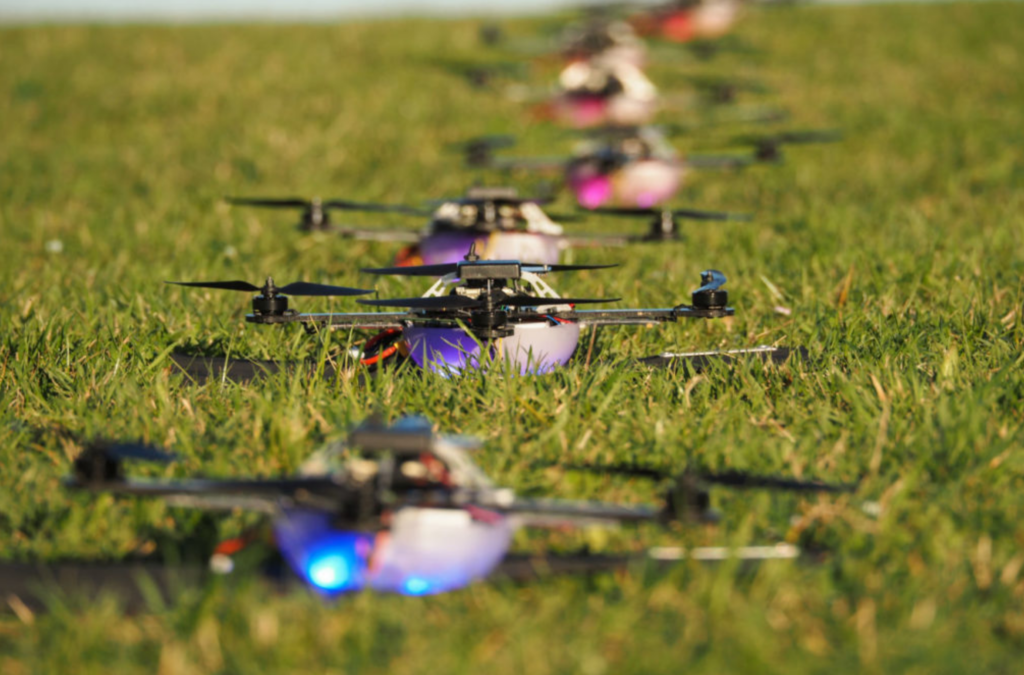
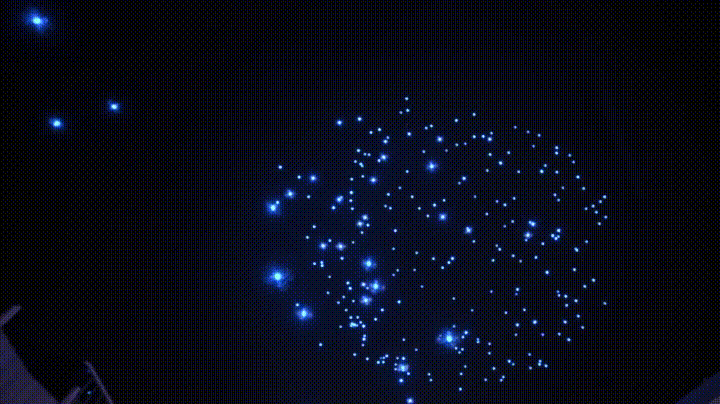
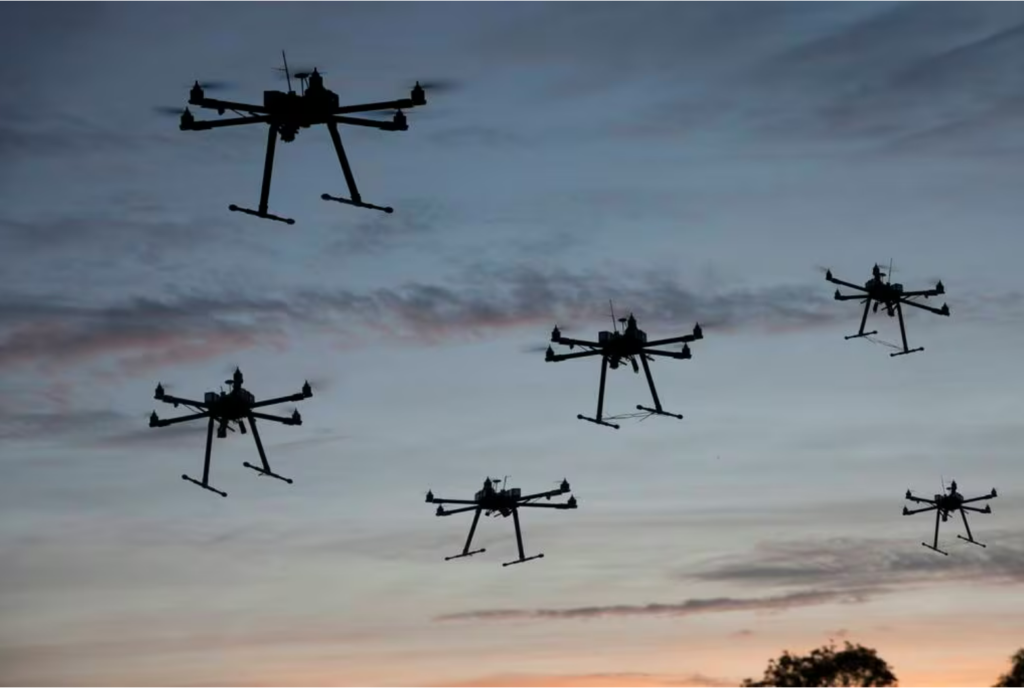
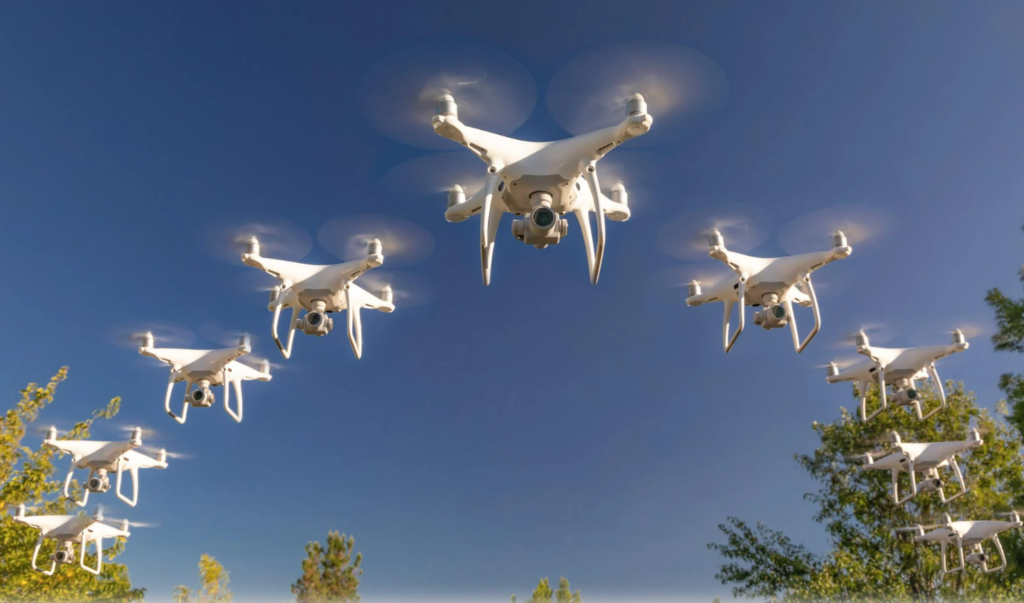
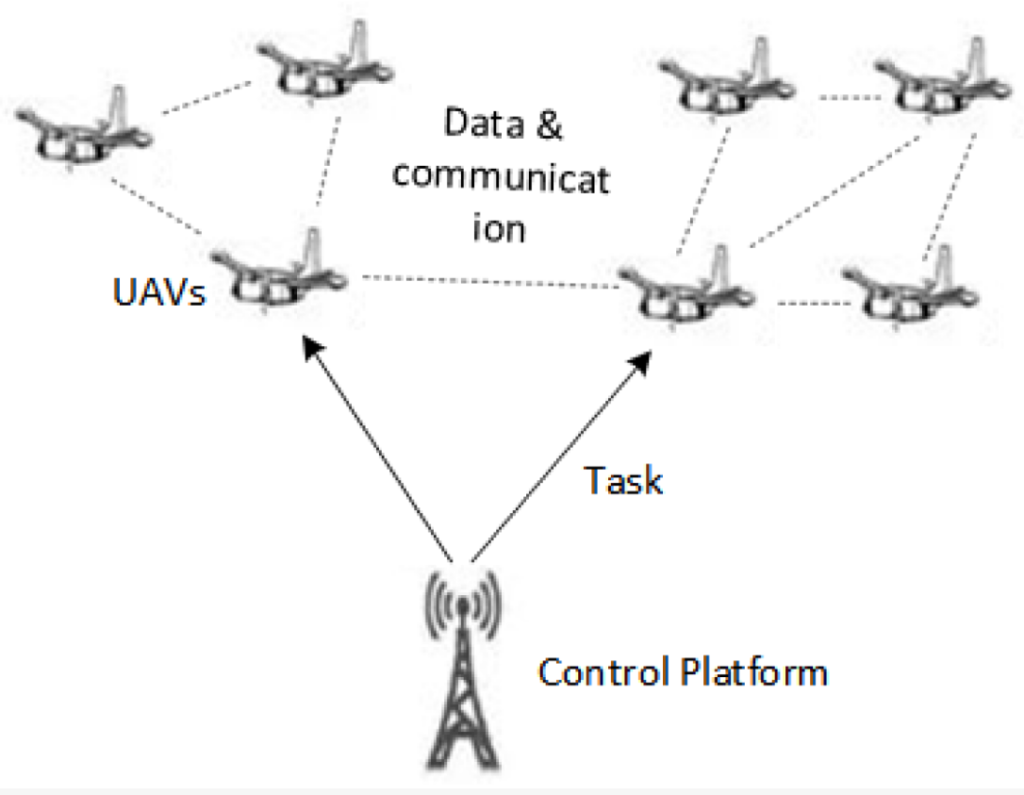
Swarm Drones
Drone swarm technologies refer to systems that enable groups of drones to coordinate their actions and movements, often autonomously or with limited human intervention. These technologies allow multiple drones to work together towards a common goal, leveraging advanced algorithms, communication protocols, and sensor integration to achieve synchronized and collaborative operations.
How does it work?
Drone swarm technologies leverage uncrewed aerial vehicles ranging in size from small to large, capable of autonomous or semi-autonomous flight. These swarms consist of at least three drones, but can scale up to thousands, all coordinated to perform missions cooperatively with limited human intervention. The drones integrate advanced computer algorithms with local sensing and communication systems, enabling them to synchronize their actions and movements to achieve common objectives. Various methods of command and control can be employed, including preprogrammed missions, centralized control from a ground station or control drone, or distributed control where drones collaborate based on shared data. Advanced techniques such as swarm intelligence and artificial intelligence may also be used to enhance the coordination and decision-making capabilities of drone swarms.
APPLICATIONS
